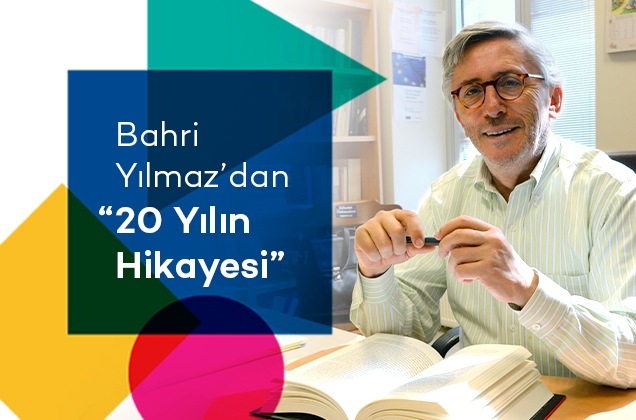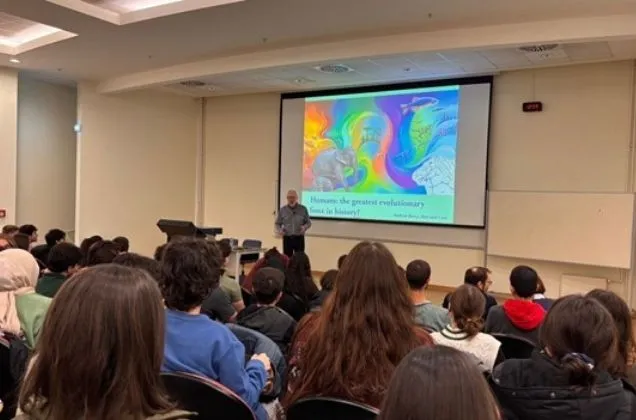14/09/2020
To celebrate the 20th year of our university, we have prepared a set of four questions to ask faculty and administrative personnel who have been with us since the beginning, and to our first students. They all tell "the story of 20 years" from their own perspectives.
Going in alphabetical order, this week's interviewee for "The Story of 20 Years" is Bahri Yılmaz.

Bahri Yılmaz has been a member of Sabancı University since June 1, 1998. He has been a member of the Sabancı University Faculty of Arts and Social Sciences (FASS) for 22 years, and an Emeritus Professor since February 2013.
Bahri Yılmaz’s answers to our four questions are below.
What was your initial memory / impression of when you met Sabancı University for the first time?
B.Y.: In the 1990s, I was working at Bilkent University. Oğuz Babüroğlu and I had been colleagues for a long time. He then left Ankara and returned to Istanbul. He called me while later and said that they had formed design committee for the establishment of Sabancı University, and invited me to the social sciences committee. I accepted. I took part in committee work in Istanbul from 1996 to 1997. My colleagues and I worked on a draft curriculum for the social sciences faculty. The most interesting part of this experience for me was that the meetings were held at the Sabancı Holding towers - this was the first time an "imaginary" university was being founded on paper in a holding boardroom. We continued our design studies with scholars from different academic circles in a variety of places. I then accepted Tosun Terzioğlu’s offer and joined Sabancı University in June 1998.
What are the differences between yourself 20 years ago and yourself today, and how did Sabancı University contribute to that change?
B.Y.: There were some changes in our life when we moved from Ankara to Istanbul. The crowd in Istanbul was a big change of pace compared to the slower life in Ankara. But the work, which started in Karaköy Minerva Han, was a highly effective collaboration that often felt like a classroom environment. A year later, the university's Information Center was complete. We moved into that building on campus and began working in an open office setting. Any issue that came up was quickly met with a crowdsourced solution. It was the best of times. As construction went on, we were anxious about our first academic year that we would launch in 1999. The university was there in name, but was physically incomplete. How would the student profile turn out? Who would be the first students? When we saw the first students who had chosen us in the fall semester of the 1999-2000 academic year, our anxiety was replaced with great joy and pride. I think 251 students had chosen us that year. Most of my initial 12 students went on to pursue graduate education abroad and chose academic careers.
Over the years, the university remained committed to development with its academic and administrative employees as well as students, reinvented itself, institutionalized, and achieved the international recognition it deserves today.
As for personal contributions to me, Sabancı University provided me with administrative and financial support that enabled me to build an international academic network, while the work environment and academic freedom ensured that I worked with highly qualified, successful students and had an effective academic career.
What comes into your mind when you think of Sabancı University in 20 years? What are your dreams for Sabancı University for the next 20 years? What about yourself?
B.Y.: Sabancı University is in a great position today; it is recognized in Turkey and abroad, and its graduates are sought-after in business and academic circles alike.
The goal for the next 20 years should be to remain abreast of social and scientific developments to maintain and advance its position both within and outside Turkey. It is imperative that we keep up with the age of globalism, and not only follow, but also contribute to developments in science.
Where and how would you be now if your paths hadn't crossed with Sabancı University?
B.Y.: This is difficult to say. I probably would have continued my academic career at Bilkent University.




